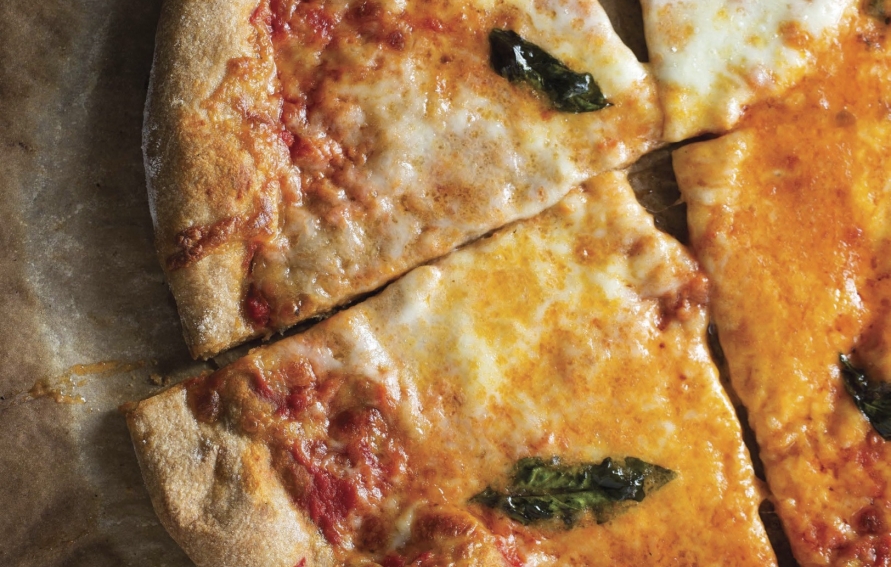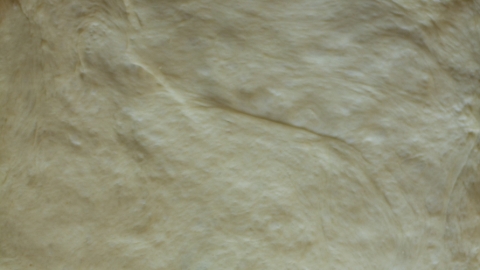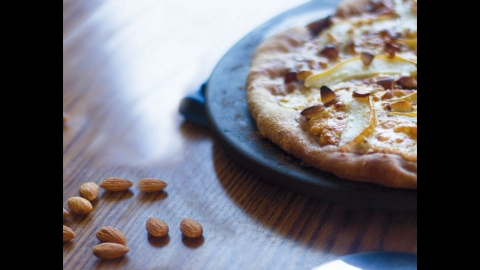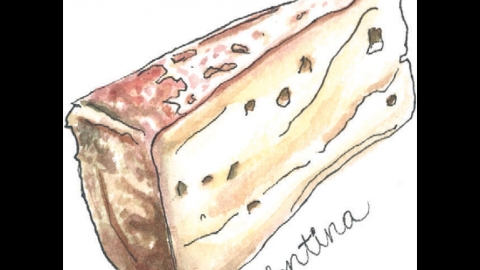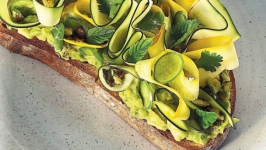Ingredients
- 5⅔ cups sprouted whole-wheat flour
- 2 teaspoons salt
- 1⅝ teaspoons instant yeast
- 2½ cups plus 3 tablespoons water, at room temperature
- 2 tablespoons olive oil
Instructions
In bowl of a stand mixer fitted with a paddle attachment, or in a large bowl, stir together flour, salt, and yeast (on low speed if using a stand mixer). Add water and olive oil and mix or stir until flour is hydrated and a coarse, wet dough forms, about 1 minute.
Let dough rest, uncovered, for 5 minutes. Then switch to a dough hook or use a wet spoon or wet hands and mix for 1 minute, on medium-low speed if using a stand mixer. Dough should smooth out and thicken slightly.
Spread about 1 teaspoon of vegetable oil or olive oil on a work surface. Using a wet or oiled bowl scraper or rubber spatula, transfer the dough to the oiled area. Lightly oil your hands, then stretch and fold the dough, folding it over itself 4 times: once each from the top, bottom and each side.
The dough will firm up slightly but still be very soft and sticky. Cover the dough with the mixing bowl and then, at intervals of 5 minutes or up to 20 minutes, perform 3 additional sequences of stretching and folding.
For each stretch-and-fold sequence, lightly oil your hands to prevent sticking. The dough will become firmer and less sticky with each stretch and fold. After the final fold, it should be very tacky and supple and have a springy or bouncy quality when patted. (Note: If holding the dough overnight, place in the refrigerator immediately after the final stretch-and-fold cycle instead of letting it rise.)
Oil a large bowl and put dough in it. Mist top of dough with vegetable spray oil and cover with a lid or plastic wrap; if using plastic wrap, stretch it tightly over the bowl rather than laying it directly on dough. Ferment dough at room temperature for 1½ to 2 hours until double in size. (This time can be shortened by using a warm proof box set at about 90°.)
Line a baking sheet with parchment paper or a silicone mat. Mist the surface with vegetable spray oil or lightly coat it with olive oil. Oil work surface again, and transfer dough to work surface with an oiled bowl scraper or rubber spatula. Divide the dough into 5 equal pieces, each weighing about 9 ounces, with an oiled metal pastry blade or plastic bowl scraper.
With lightly oiled hands, form each piece into a round. Put dough balls on prepared pan, spacing them evenly. Mist with vegetable spray oil, then loosely cover the pan with plastic wrap or put it in a large plastic bag. Proof for 1 to 2 hours; dough won’t double in size, but it should show signs of swelling and expansion. If you won’t be making pizzas immediately, refrigerate dough, then remove it from the refrigerator about 1½ hours before you plan to make the flatbreads.
To shape, press ball of dough into a flat disk using your fingertips. Slide backs of your hands under dough, then lift it and begin to rotate it, using your thumbs to coax the edges of dough into a larger circle.
Don’t stretch dough with the backs of your hands or your knuckles; let your thumbs and gravity do the work. Your hands and knuckles merely provide a platform to support the dough. (If the dough starts to shrink back, set it on the floured work surface and let it rest for a minute or 2. You can move on to another dough ball, repeating the same gentle stretching.)
Work from edges only, not from the center of the dough, and continue stretching until you have a 9- to 12-inch disk. Place shaped dough on a floured or parchment-lined peel or back of a baking sheet. Patch any holes in dough so sauce and other toppings don’t go through the dough, then add toppings.
Preheat the oven to the highest it will go.
When the crust is ready to be topped, place it on a floured peel. Be sure to use flour rather than cornmeal or semolina, as it doesn’t burn as quickly in the oven. Top dough as desired, then slide it onto the baking stone. If you aren’t using a baking stone, just put the panned dough in the oven. While it’s baking, shape your next flatbread.
Bake for about 4 minutes, then use peel or a spatula to rotate pizza. It will take anywhere from 5 to 7 minutes for pizza to fully bake, depending on the oven. Edge should puff up and be a deep golden brown, perhaps even slightly charred.
Remove flatbread, garnish as desired, then let it cool for 1 minute before slicing and serving. Continue baking as many flatbreads as you’d like (the dough will hold up to an hour out of the refrigerator.)

